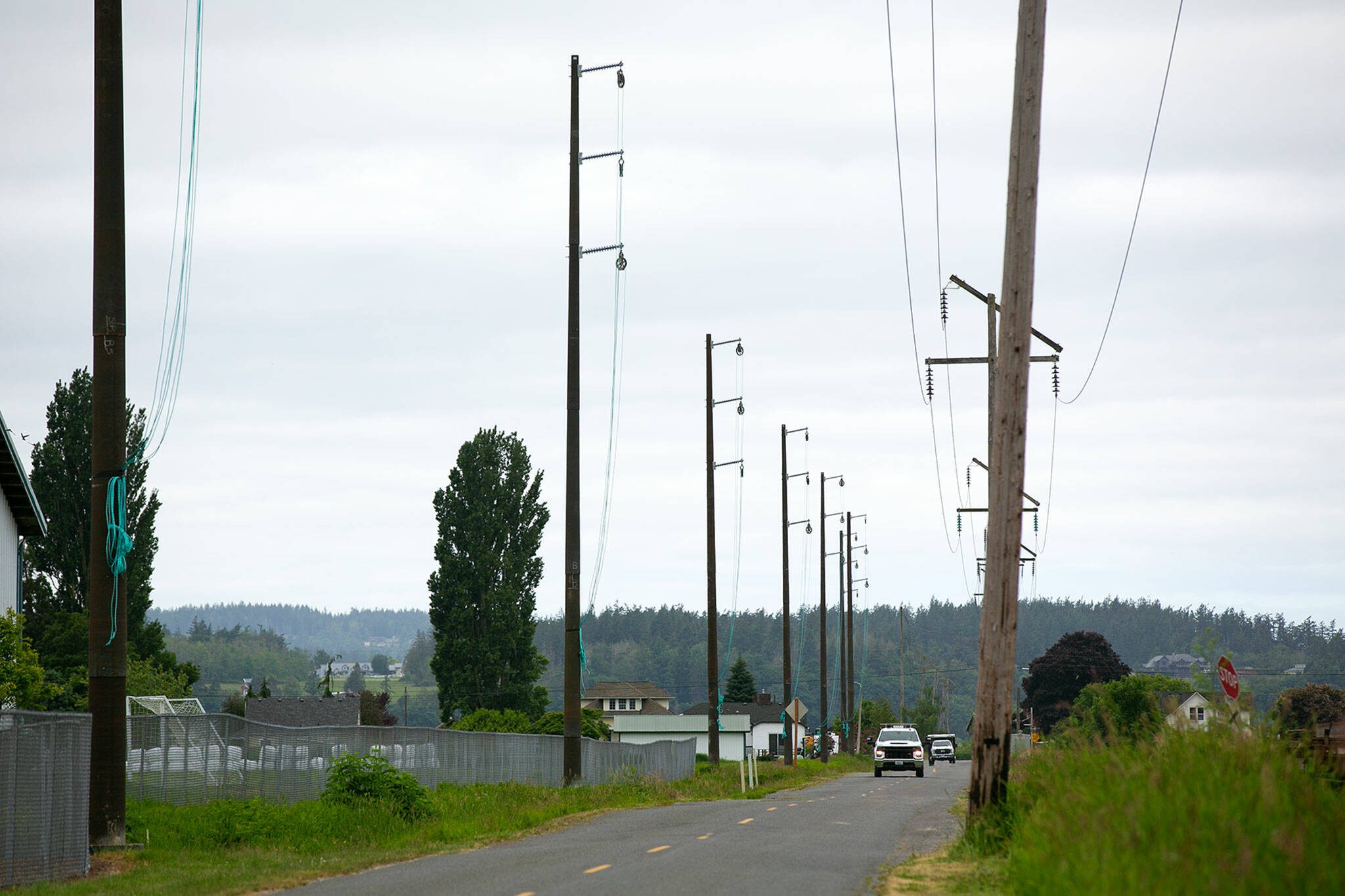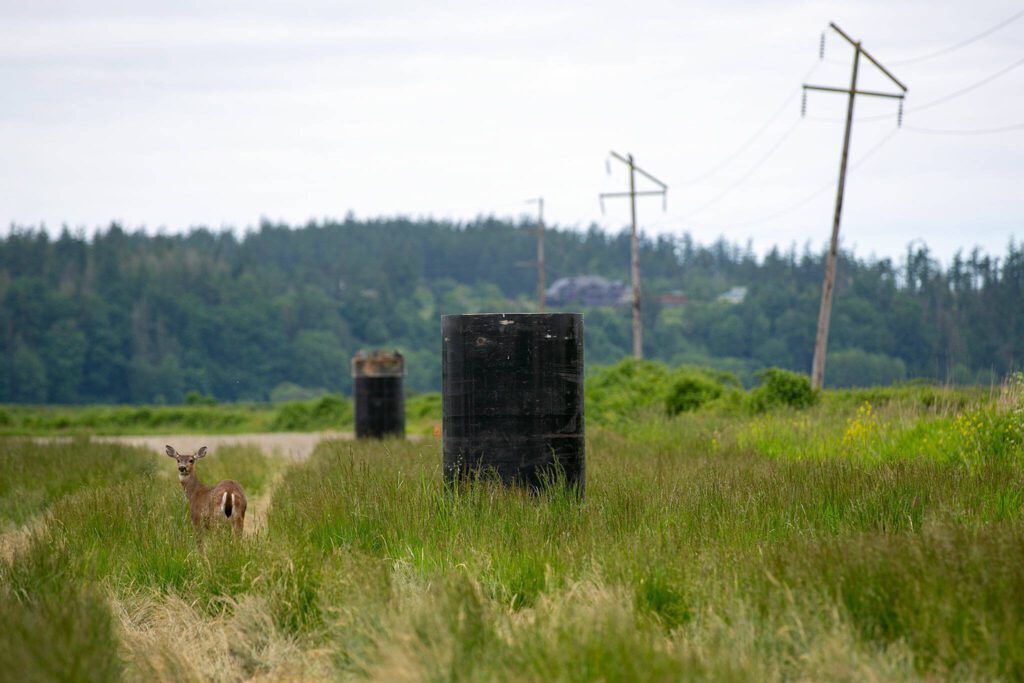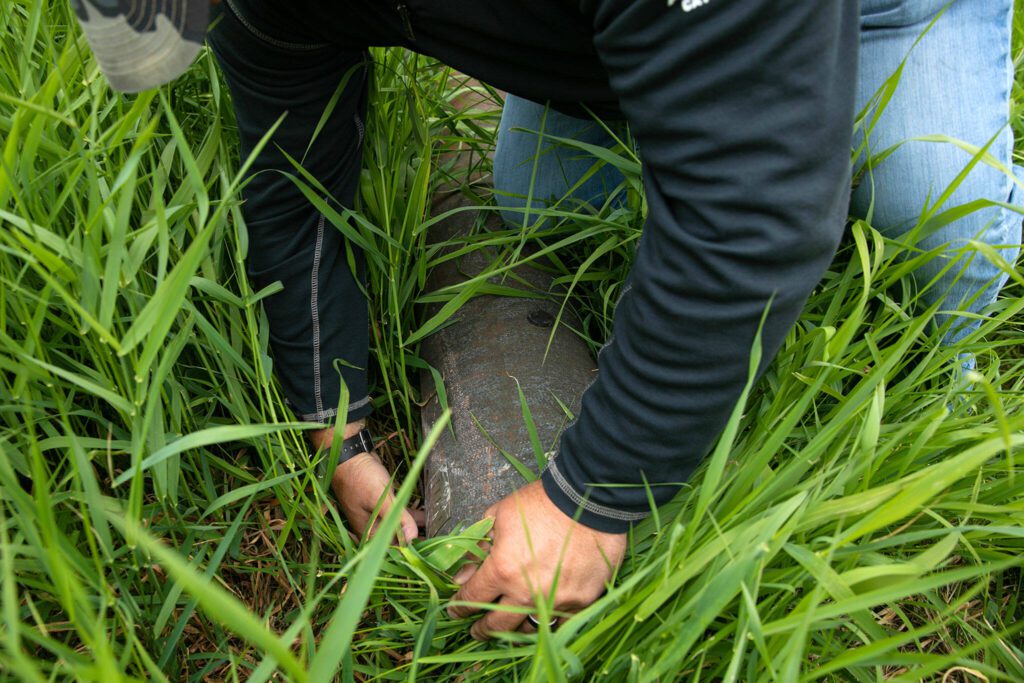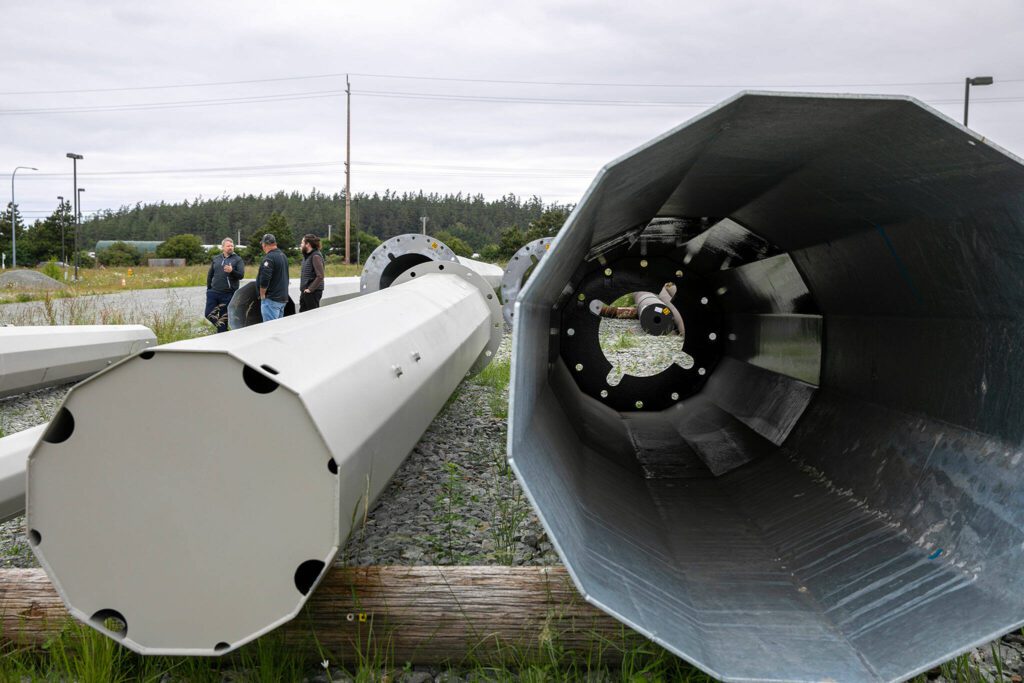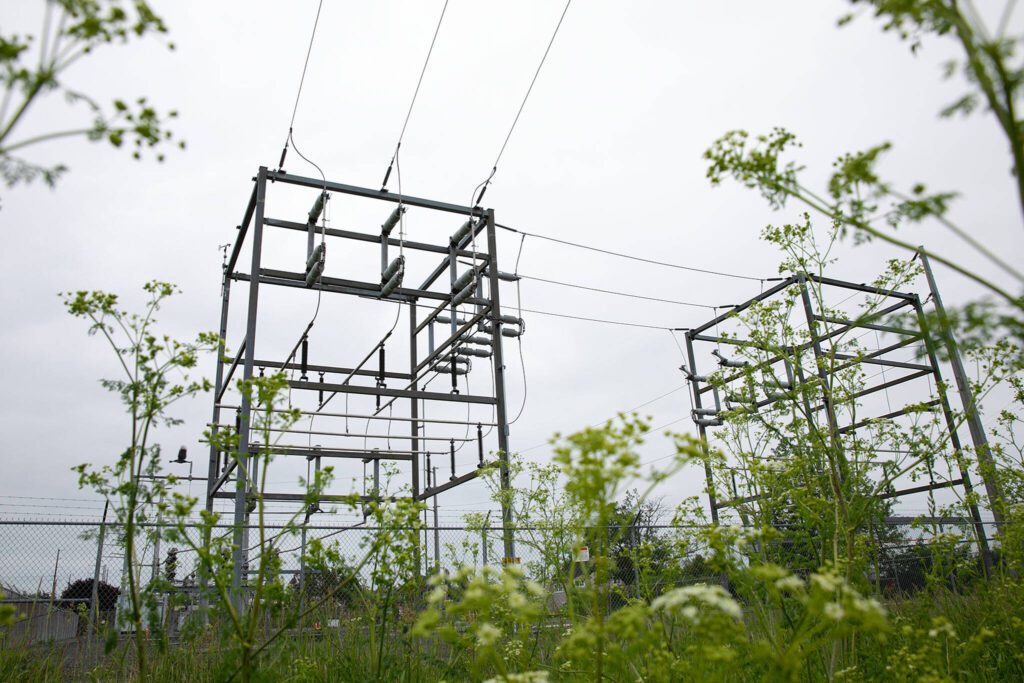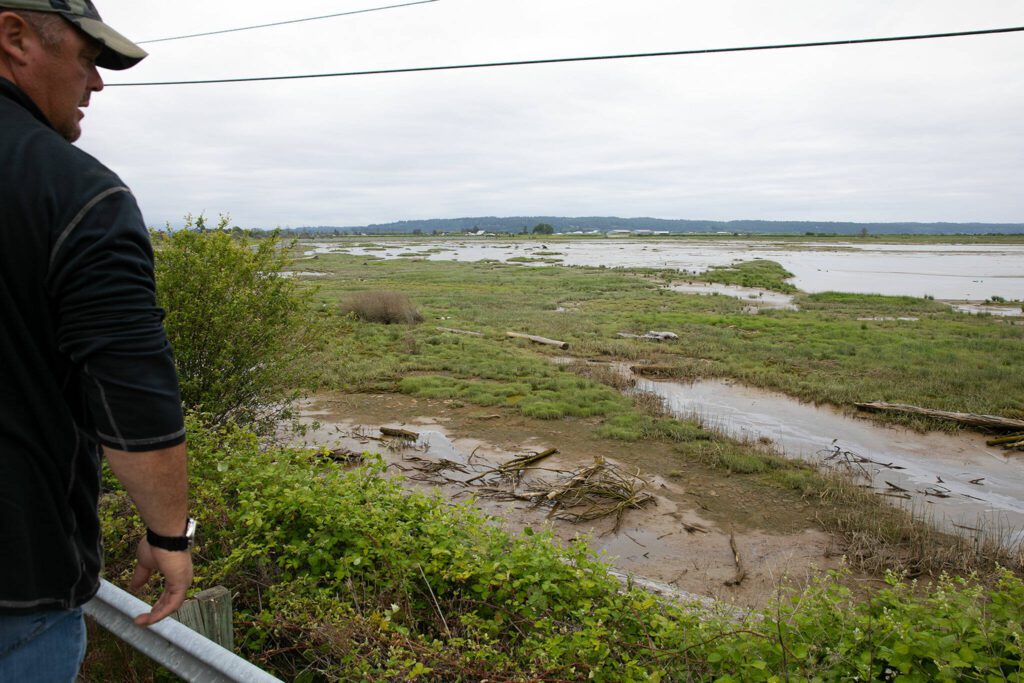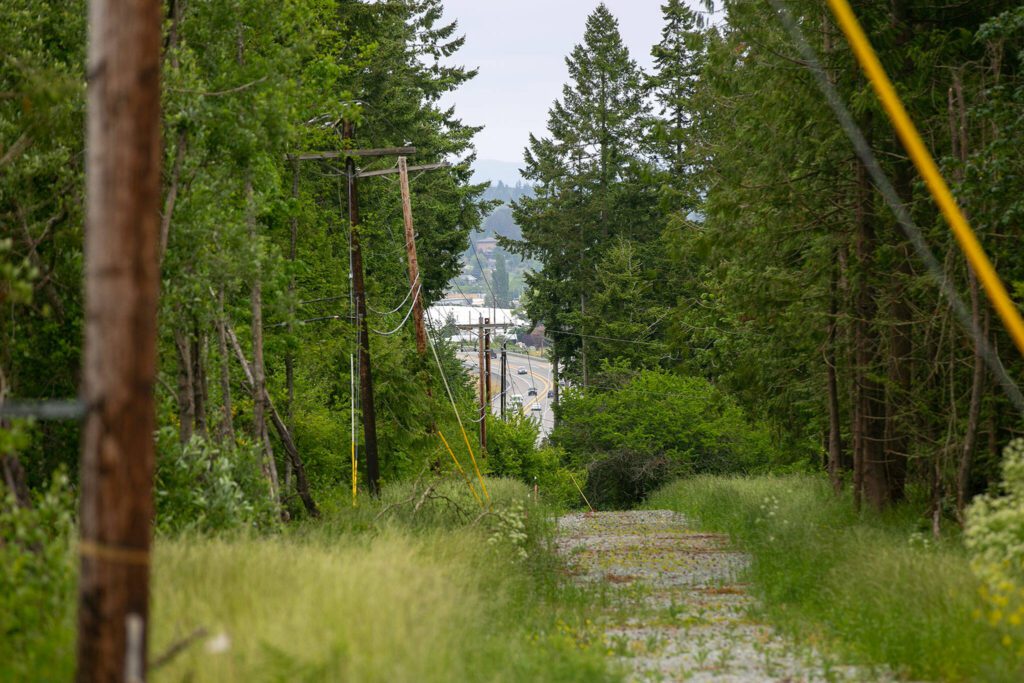STANWOOD — Keeping power flowing to Camano Island during storms is about to get a little less tricky.
To alleviate pressure from storm damage, Snohomish County Public Utility District crews are installing a new high-voltage line between Stanwood and the North Camano substation, which is near where Highway 532 crosses N Camano Drive. The North Camano substation is also receiving upgrades.
It is a massive project — in all, 85 new steel and iron poles are set to be installed between this summer and the end of the year. It is the largest transmission line project PUD has ever done in-house, utility officials said. The power lines are all above ground.
“Now, if we have a problem, we can attack it right away,” said Casey Wright, the major equipment in-yard lead with PUD. “We’ll have the ability to go out with our own equipment and people and work on it in an emergency situation.”
Once finished, it will be a so-called “redundant line,” meaning there will be two separate lines that can transfer power from the mainland. It is a project that has been in the works for a decade, with much of the engineering, planning and permitting done in the past 18 months.
This is important during a storm, as trees can fall and damage lines, especially on a windy, wooded island like Camano. Eric Brooks, deputy director of Island County Emergency Management, said residents are “not strangers” to power outages.
Many of the island’s roughly 17,000 residents are elderly, which means power is not only critical for climate control and food storage, but for medical devices as well, Brooks said. He also noted storms seem to be getting worse as time goes on.
The metal poles will help avoid storm damage. Woodpeckers, who love to dig into wooden poles, will find metal poles less appetizing.
The new poles are strong and burrowed deep in the ground. The project has met some technical challenges. The water table in the area is high, meaning it is more difficult to set the poles correctly.
Utility employees developed an installation process to help solve the problem: An excavator digs a hole, and the casing, which looks similar to a metal water culvert, is set in the hole. Then an auger clears excess dirt from inside the casing and the pole can be set.
Most of the casings go 20 feet into the ground and the poles themselves sit in the hole at a depth of about 18 feet. Some of the steel poles sit in the ground a little deeper, around 24 feet. Most of the poles are 85 feet tall before they go in the ground.
“I’m constantly amazed at the problem solving our crews do,” PUD spokesman Aaron Swaney said. “It’s always something that throws kind of a curveball, right? They jump on it and they’re able to solve problems really quickly.”
It’s a major challenge to even get to where the poles are supposed to go. Some of the early work on the project was done in floodplain, meaning when it’s raining outside, it’s swampy in the weeds. Many of the planned poles are in the weeds.
Giant mats act as a sort of bridge to swampy worksites. PUD is using over 400 of them for the project.
Each pole comes with its own challenges. Some require an easement, like a section near Restoration Church, which is just across the bridge from Stanwood. Others required some extra creativity as most of the wetland has deep ditches near the road. They had to figure a way to cross those. Again, a similar mat was used to fill in the ditches. The alternative, Wright said, would be more complicated.
“If we put a culvert in there and filled it with dirt, we’d just have to dig it out,” Wright said.
PUD also has several other projects on tap for this summer. An upgrade at the Edgecomb substation in Arlington is expected to be completed this year, as is construction of the new Sky Valley substation in Monroe. Both projects expect to meet growing demand.
In addition, a new line over I-5 will be connected to the Ballinger substation to help power needs in growing parts of Mountlake Terrace, as well as a future Link light rail station.
Construction also continues on PUD’s new North Community Office, at the same site as the Arlington microgrid. Once completed, the office and warehouse will include public electric vehicle stations and a solar array.
Jordan Hansen: 425-339-3046; jordan.hansen@heraldnet.com; Twitter: @jordyhansen.
Talk to us
> Give us your news tips.
> Send us a letter to the editor.
> More Herald contact information.
